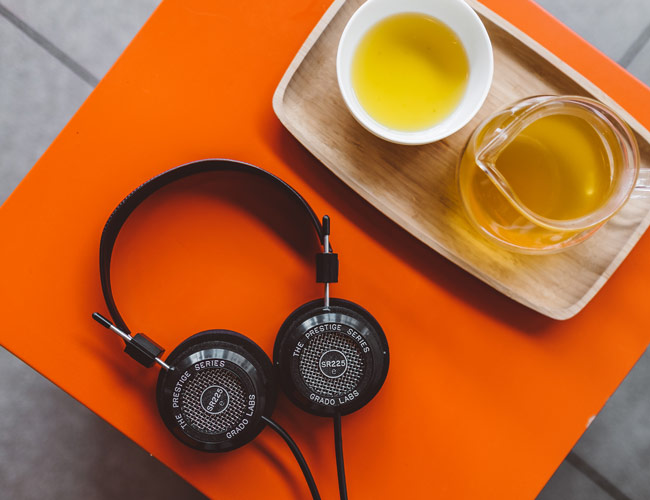The Grado PS1000 was the company’s original flagship headphone. And since it was introduced nearly a decade ago, it’s been nearly peerless in the hi-fi headphone realm — What Hi-Fi proclaimed that “headphones can’t get much better than this.” Just this past summer though, Grado finally announced the next generation of its flagship headphone, the PS2000e ($2,695). John Grado, the CEO of Grado Labs, claims that the PS2000e is the company’s best headphone ever. And just like Grado’s other headphones, the PS2000e is made in Brooklyn.
|
The Good: The Grado Professional Series PS2000e headphones are the best Grado headphones that we’ve ever listened to, and one of the best performing headphones we’ve listened to period. We should caveat that by also adding that the PS2000e serves a specific, no compromises critical listener. They are unapologetically professional. The PS2000e produces as naturally as we’ve ever heard. They are designed with a metal and maple hybrid inner chamber, which helps eliminate ringing and distortions, and Grado has avoided imbuing these headphones with any kind of sound profile you might see in most consumer-grade headphones. The sound is truly authentic. If you’re a critical listener, they’ll have you grinning from ear to ear as you throw every song on your playlist at it.
The one thing you’ll notice about the PS2000e’s sound reproduction is its ability to go deep into bass registers and high into upper echelon’s of frequency range without any kind of discernible impact to detail and definition. Nothing gets hot or distorted and their ability to scale with volume while maintaining their quality of reproduction is a feat of engineering. In fact, the discerning listener might even find the limits of their own headphone amplifiers.
Who They’re For: Chances are that these headphones aren’t designed for 90 percent of consumers due the $2,700 price tag and the headphones’ focused purpose. The PS2000e are for audiophiles who actively listen to music using a headphone amp to properly drive quality. The mantra of Grado headphones is “as much sound as money can buy,” and with these headphones, you can rest easy knowing you’re paying for the best.
Watch Out For: Expensive. The head band is lacking in design, which is something to keep in mind considering the overall weight. Unnecessarily bulky cables. Open-air grille design may not be for everyone. A rather budget-grade packaging experience too, though this has become of a bit of a signature of Grado products.
Alternatives: If the PS2000e is out of your price range, you can buy the PS1000e ($1,695) for a grand less. But if you’re in the market for some high-level reference quality headphones, you can also look towards the Audeze LCD-MX4 ($2,995) or the Hifiman HE1000 V2 9 ($2,999).
What Others Are Saying:
• “The PS2000e is my favorite-sounding Grado. I like its speed, its more natural upper midrange, and its wide-spread low band. In some ways, it confuses: is it a Grado? or is it a hybrid, with eyes set on the Germans? I reckon this is Grado’s first high-end headphone that may appeal more broadly to fans of other brands.” — Nathan, Headfonia
• “To sum up the Grado PS2000e hybrid open-back headphone, it’s one of the finest sounding headphones to come from Grado Labs so far. The genius concept of using maple wood for the sound chamber mixed with metal creates a totally unique sound that will please many audiophiles. No matter what your music preference I recommend at least testing a pair with your favorite tracks and I think you’ll hear your music in a totally new light. It’s a slight bit heavy but not uncomfortably so. The truth is it’s super cool looking, has a great frequency response including solid bass and the soundstage is outstanding.” — Steven Newcastle, Major HiFi
Key Specs
Transducer: Dynamic
Operating Principle: Open Air
Frequency Response: 5–50,000 hz
SPL 1mW: 99.8 dB
Nominal Impedance: 32 ohms
Driver Matched dB: .05 dB
|
Makers of some of the most beautiful speakers and headphones on the planet. Read the Story


